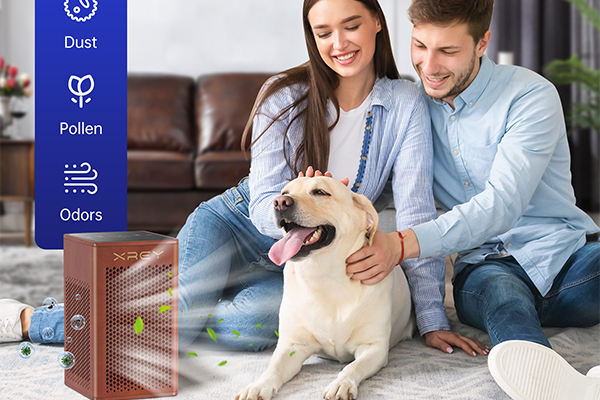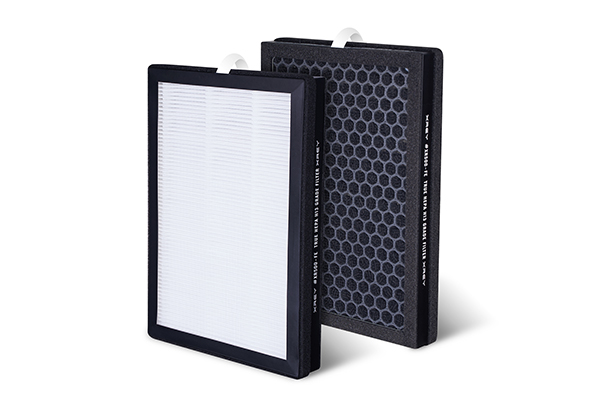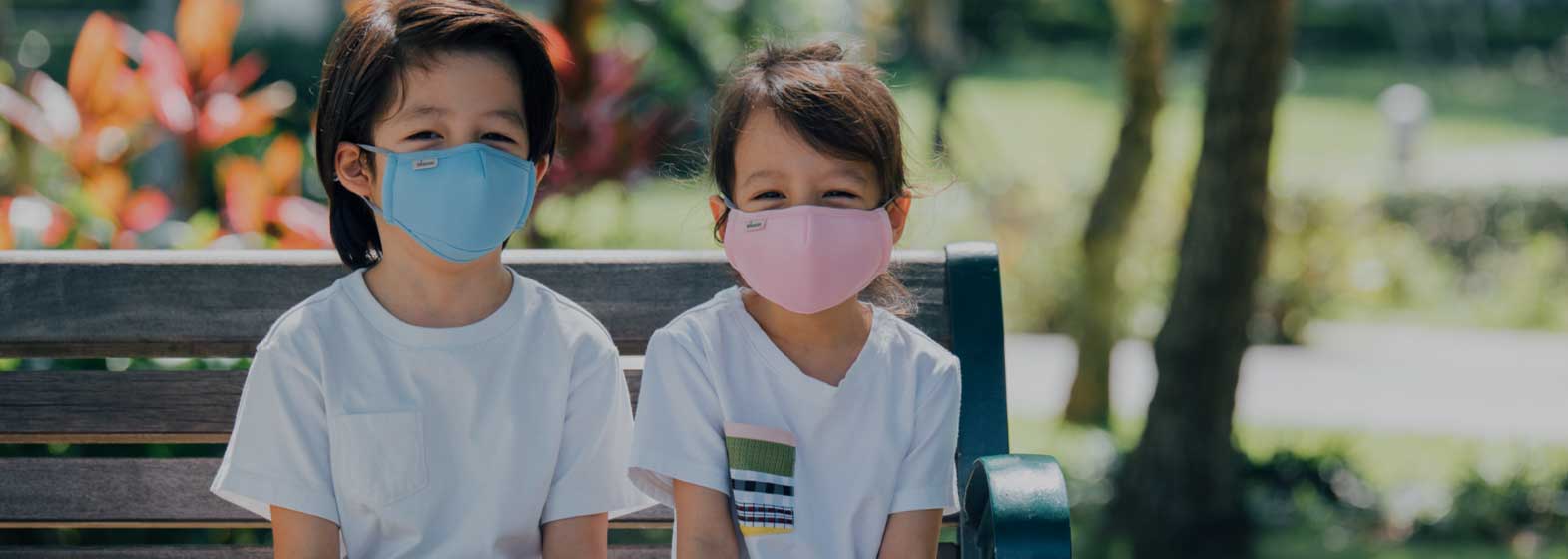
How to Make Sure a Respirator Offers the Right Protection?
- Connexions
- 2021-02-03
- 2348
But how to make sure those filters meet the binding requirements? Then, when worn, how to make sure the respirators do not leak? Finally, in the current mask shortage situation, how to detect counterfeits? Oliver F. Bischof, Director of Sales – EMEA at TSI explained to us how filter testers and fit testers make sure respirators offer the right protection.
Hicham Dhouibi, technical expert, contributed to this article.
Respirators are personal protective equipment (PPE) that offer maximum filtration of particles and droplet aerosols. They are currently massively worn by healthcare professionals fighting COVID-19. They are also widely used in hazardous industrial environments.
Filter Testing
Respirators must meet binding standards (that are different depending on the country) and therefore need to be tested before they go on the market to make sure they are compliant with these standards. TSI provides mask manufacturers, test laboratories and certification bodies a filter tester (Automated Filter Tester Model 8130A) that measures the filtration efficiency of respirators as required by the different national and regional standards.
How does filter testing work?
Oliver F. Bischof: There are different classes of filters. In Europe, FFP1 means that the filter’s filtration efficiency takes out 80% of the airborne solid or droplet particles. FFP2 means it filters 94% of the particles. FFP3 does it for 99% of the particles. If you are a mask manufacturer and you want to bring a respirator, a filtering facepiece or a filtering half mask to market, you have to meet the binding legislation. So you need to test your filters for certification, but also quality assurance and quality control.
Testing filters itself is not that difficult. You need an aerosol source, we call it a challenge aerosol, a conditioning to dilute, dry and/or neutralize the aerosol and a filter holder. Then you measure upstream and downstream of that filter with a laser photometer or a particle counter.
And the ratio between the signal upstream and downstream gives the filter efficiency. The test takes between 5 and 10 seconds, depending on the model of the tester. Our product family called Automated Filter Tester 8130A can be used to meet European standards but also national Chinese, Japanese and US standards. We have the ability to use the same tester to meet different standards.
How different is the testing process depending on the standards?
Oliver F. Bischof: The challenge aerosols differ according to the standards. For example, the US standard requires only sodium chloride as the challenge aerosol. For the EU standard, you need to have sodium chloride and also an oil aerosol such as paraffin. So you need to use the right type of aerosol and the right aerosol characteristics (the mass median diameter and the standard deviation of the challenge aerosol) to make a compliant test. Our tester can be equipped with different types of aerosol generators to make compliant quality control testing according to the local standards. The machine is made to meet respirator testing standards whatever the standards are.
So with your machine, a manufacturer can test the same masks to be compliant with different standards.
Oliver F. Bischof: Yes. When you manufacture in China it does not mean that you are only producing for the Chinese market. A respirator is labor-intensive so all the mask manufacturers such as 3M and Honeywell are global companies with big production sites in the Asia Pacific region. So if these companies want to bring respirators to the European market, they have to demonstrate that their production is in line with the European standards. So most manufacturers usually order all types of aerosol generators, and not only the ones required by the country they are in.
Can your machines also be used to test surgical masks and the new barrier masks?
Oliver F. Bischof: Surgical masks are not respirators. They are not PPE. So surgical masks and all the homemade masks do not have to meet the valid standards for filtering half masks. And they can’t, either. Of course, we can test their filtration efficiency if we put them into a filter holder. For example, a very good surgical mask, with 3 layers of filtration material, can have a filtration efficiency as high as 80 %. However, most of the ones that people are wearing today have a filtration efficiency of maybe 10 to 30%.
As for the homemade community or barrier masks, they differ widely because they use every piece of cloth. The only purpose they can possibly serve is to create a barrier of what a person exhales to protect others. But they do not provide any reliable protection for the wearer because whatever he/she is inhaling is not properly filtered. Our machines can test everything: masks that are ready to be worn, filter media, media capsules. But our claim is that our machines meet the various global respirator standards.
Fit Testing
Filter testing is essential to ensure a respirator offers the right protection and filtration efficiency that it is expected to provide. But that is not all. A respirator must also be worn correctly and well used to guarantee full protection and minimum leakage. When badly worn, even the best respirator becomes meaningless. It is probably less well known, but fit testers are here to make sure that respirators fit well on a person. TSI has developed the PortaCount Respirator Fit Tester 8040 for that very purpose.
Why is fit testing important?
Oliver F. Bischof: We are seeing a drastically increased demand, mainly driven by hospitals because people fighting the virus are only properly protected when fit tested. But there is also an increasing demand for fit testing to verify that the masks are not counterfeit. Because of the shortage of respirators and filtering face pieces all around the world, there is a lot of counterfeit products on the market. They look authentic and might carry the EN 149 reference number. Some even show the CE mark with a notified body number and have certifications, so hospitals spend millions on these products. Once they get them on site, they do the fit test and realize there is something wrong with them. Fit testing is currently the most common way of showing that a shipment of respirators is actually not meeting expectations. If you buy a 3M FFP3 half mask respirator you should expect that it has a fit factor of 100. If a shipment of respirators supposedly made by 3M is tested and fail the fit test, then you know it is most probably counterfeit.
-
 2022-04-26Are air purifiers environmentally friendly ?
2022-04-26Are air purifiers environmentally friendly ? -
 2022-04-26The importance of wearing a mask correctly
2022-04-26The importance of wearing a mask correctly -
 2022-04-27Connexions Air H13 True HEPA Filters
2022-04-27Connexions Air H13 True HEPA Filters -
 2022-04-29What is the use of anion function of air purifier?
2022-04-29What is the use of anion function of air purifier? -
 2022-05-08Standardize the wearing of masks, children should not be missed!
2022-05-08Standardize the wearing of masks, children should not be missed! -
 2022-05-16Hazy days, air purifiers are useful?
2022-05-16Hazy days, air purifiers are useful? -
 2022-05-16Attention everyone! Don't buy fake FFP2 masks! How do we identify?
2022-05-16Attention everyone! Don't buy fake FFP2 masks! How do we identify? -
 2022-05-17Pay attention to secondary pollution when using air purifiers
2022-05-17Pay attention to secondary pollution when using air purifiers -
 2022-05-17TOP5 pollutants that the purifier can purify
2022-05-17TOP5 pollutants that the purifier can purify
-
 2020-06-02Why do Face Masks Matter With This Coronavirus
2020-06-02Why do Face Masks Matter With This Coronavirus -
 2020-06-02How to Wear Mask
2020-06-02How to Wear Mask -
 2020-06-02Three Principles of Choice of Masks
2020-06-02Three Principles of Choice of Masks -
 2020-06-022020 Situation of Mask Market
2020-06-022020 Situation of Mask Market -
 2020-06-17What other preventative measures can you take to protect yourself from airborne substances?
2020-06-17What other preventative measures can you take to protect yourself from airborne substances? -
 2020-06-08The Advantage of Disposable Face Masks
2020-06-08The Advantage of Disposable Face Masks -
 2020-06-093 Ply Disposable Face Mask & Soft & Comfortable Ear Loop
2020-06-093 Ply Disposable Face Mask & Soft & Comfortable Ear Loop -
 2020-06-17What are the regulations for surgical face masks?
2020-06-17What are the regulations for surgical face masks? -
 2020-06-09Do I need to wear a face mask if I am quarantined?
2020-06-09Do I need to wear a face mask if I am quarantined?
CONTACT US


Connexions Technology (Dongguan) Ltd.
We are always providing our customers with reliable products and considerate services.
If you would like to keep touch with us directly, please go to contact us
